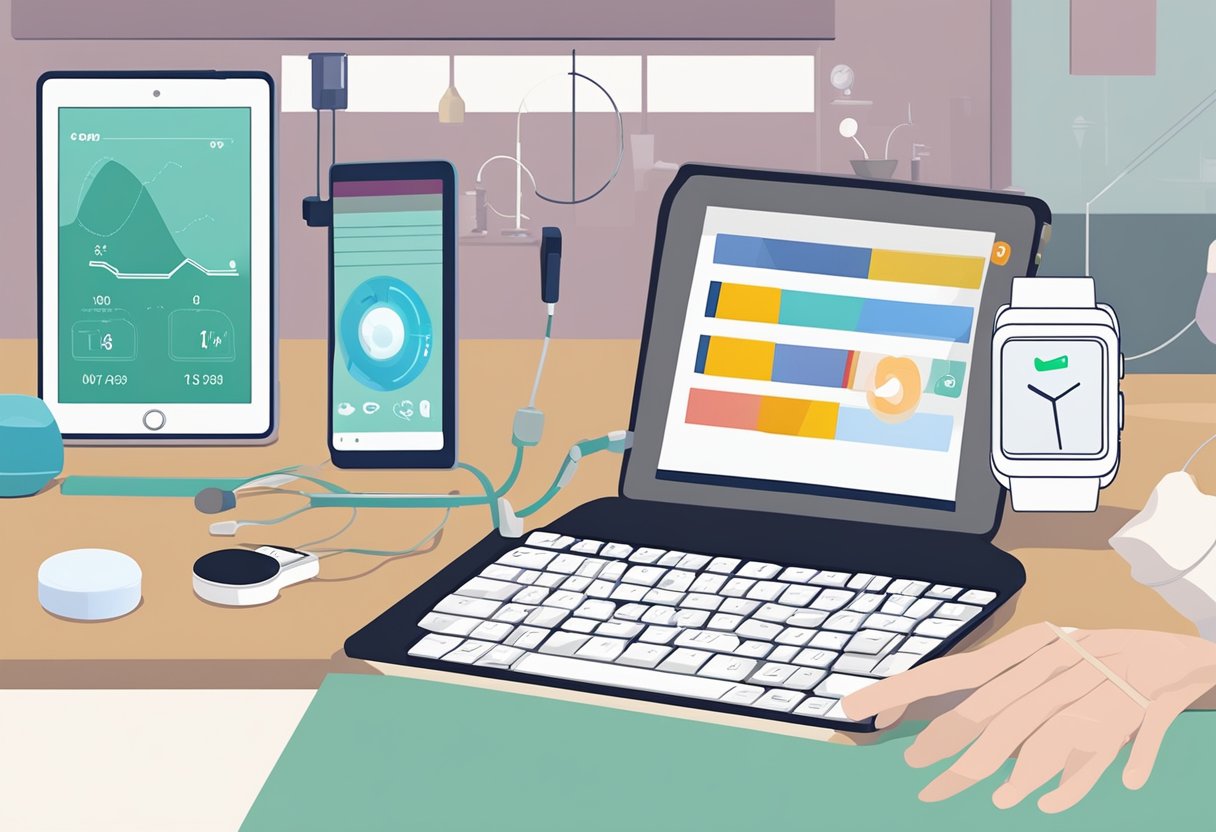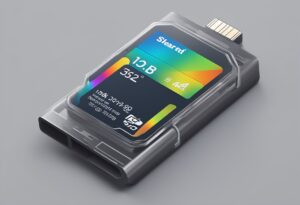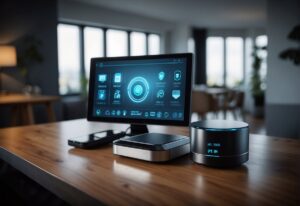As the world’s population ages, the demand for innovative solutions to enhance the quality of life for the elderly is increasing.
One of the most promising technologies in this regard is the Internet of Things (IoT).
IoT gadgets have the potential to revolutionize elderly care by providing a wide range of benefits, including health monitoring, safety, security, and independence.
IoT devices are connected to the internet and can communicate with each other, making them ideal for monitoring and managing the health of elderly individuals.
For example, wearable devices can track vital signs such as heart rate, blood pressure, and oxygen levels.
This data can be transmitted to healthcare professionals in real-time, allowing for early detection of health problems and timely intervention.
Moreover, IoT gadgets can help elderly individuals manage chronic conditions such as diabetes and hypertension by providing reminders to take medication and monitoring their symptoms.
In addition to health monitoring, IoT gadgets can also enhance the safety, security, and independence of elderly individuals.
Smart home technology, for example, can detect falls and alert emergency services if necessary.
Smart locks and security cameras can provide added security, while voice-activated assistants can help elderly individuals perform everyday tasks such as ordering groceries or setting reminders.
Key Takeaways
- IoT gadgets have the potential to revolutionize elderly care by providing health monitoring, safety, security, and independence.
- Wearable devices can track vital signs and help manage chronic conditions such as diabetes and hypertension.
- Smart home technology, security cameras, and voice-activated assistants can enhance safety, security, and independence for elderly individuals.
Understanding IoT and Its Impact on Elderly Care
The Basics of IoT Technology
IoT refers to the interconnection of devices, sensors, and software, enabling them to communicate with each other and exchange data.
This technology has been growing rapidly in recent years, and it has the potential to revolutionize the way we live our lives, particularly in the healthcare industry.
IoT devices can be used to monitor a wide range of health-related parameters, including blood pressure, heart rate, and blood sugar levels.
They can also provide real-time feedback to healthcare professionals, allowing them to make more informed decisions about patient care.
IoT in Healthcare Systems
As the global population ages, healthcare systems are facing increasing pressure to provide high-quality care to elderly patients while keeping costs down.
IoT technology can help to address these challenges by providing innovative solutions that enhance the quality of life for the elderly.
For example, wearable devices such as smartwatches and fitness trackers can be used to monitor physical activity levels and provide feedback to patients and healthcare professionals.
Additionally, IoT-enabled medication dispensers can help to ensure that elderly patients take their medications on time and in the correct dosage.
There are already several IoT gadgets available in the market that are designed to enhance the quality of life for the elderly population.
For instance, Philips Lifeline is an emergency response system that allows elderly people to call for help in case of an emergency.
Similarly, the GrandCare system is a comprehensive home health monitoring solution that includes sensors for monitoring activity levels, medication adherence, and vital signs.
Health Monitoring and Management for the Elderly
As the aging population continues to grow, there is a greater need for innovative IoT gadgets that can enhance the quality of life for the elderly.
Wearable Devices and Sensors
Wearable devices and sensors are becoming increasingly popular for health monitoring.
These devices can track a wide range of health parameters, including heart rate, blood pressure, and activity levels.
They can also monitor sleep patterns and provide alerts if there are any changes that could indicate a health issue.
Wearable devices and sensors are particularly useful for the elderly, as they can help to detect health conditions early on, allowing for early intervention and treatment.
They can also provide valuable data to healthcare providers, enabling them to make more informed decisions about patient care.
Remote Health Management Systems
Remote health management systems are another area where IoT technology can have a significant impact.
These systems allow healthcare providers to remotely monitor patients, enabling them to detect changes in health status and intervene early if necessary.
Remote health management systems can be particularly useful for the elderly, as they can provide a means of monitoring chronic diseases such as diabetes and hypertension.
They can also help to reduce the need for hospitalization, as healthcare providers can intervene before a health issue becomes serious.
IoT-Based Healthcare Innovations
IoT-based healthcare innovations are also emerging as a promising area for health monitoring and management.
These innovations use IoT technology to provide real-time data on health conditions, enabling healthcare providers to make more informed decisions about patient care.
Examples of IoT-based healthcare innovations include smart pill dispensers that can remind patients to take their medication, as well as smart home devices that can monitor health parameters such as blood pressure and glucose levels.
Safety, Security, and Independence
As people age, their safety, security, and independence become a top priority. Fortunately, IoT gadgets have made it possible to address these concerns in innovative ways. Here are some of the ways IoT gadgets can enhance the quality of life for the elderly.
Smart Homes and Automation
Smart homes are becoming increasingly popular among the elderly population.
These homes have IoT gadgets that can automate various tasks, such as turning on and off lights, adjusting temperature settings, and even locking and unlocking doors.
This automation can help the elderly maintain their independence, as they no longer have to rely on others to perform these tasks for them.
Fall Detection and Prevention
Falls are a major concern for the elderly, as they can lead to serious injuries. IoT gadgets can help prevent falls by detecting them before they happen.
For example, some gadgets can detect changes in gait or balance and alert the user or caregiver to take action. Other gadgets can automatically adjust the lighting in a room to prevent tripping hazards.
Privacy and Data Security Concerns
Privacy and data security are major concerns when it comes to IoT gadgets.
The elderly may be especially vulnerable to these concerns, as they may not be as familiar with technology as younger generations.
It is important to choose gadgets that have strong privacy and security features, such as encryption and two-factor authentication.
Additionally, it is important to regularly update gadgets to ensure they are protected against the latest threats.
Enhancing Quality of Life Through IoT
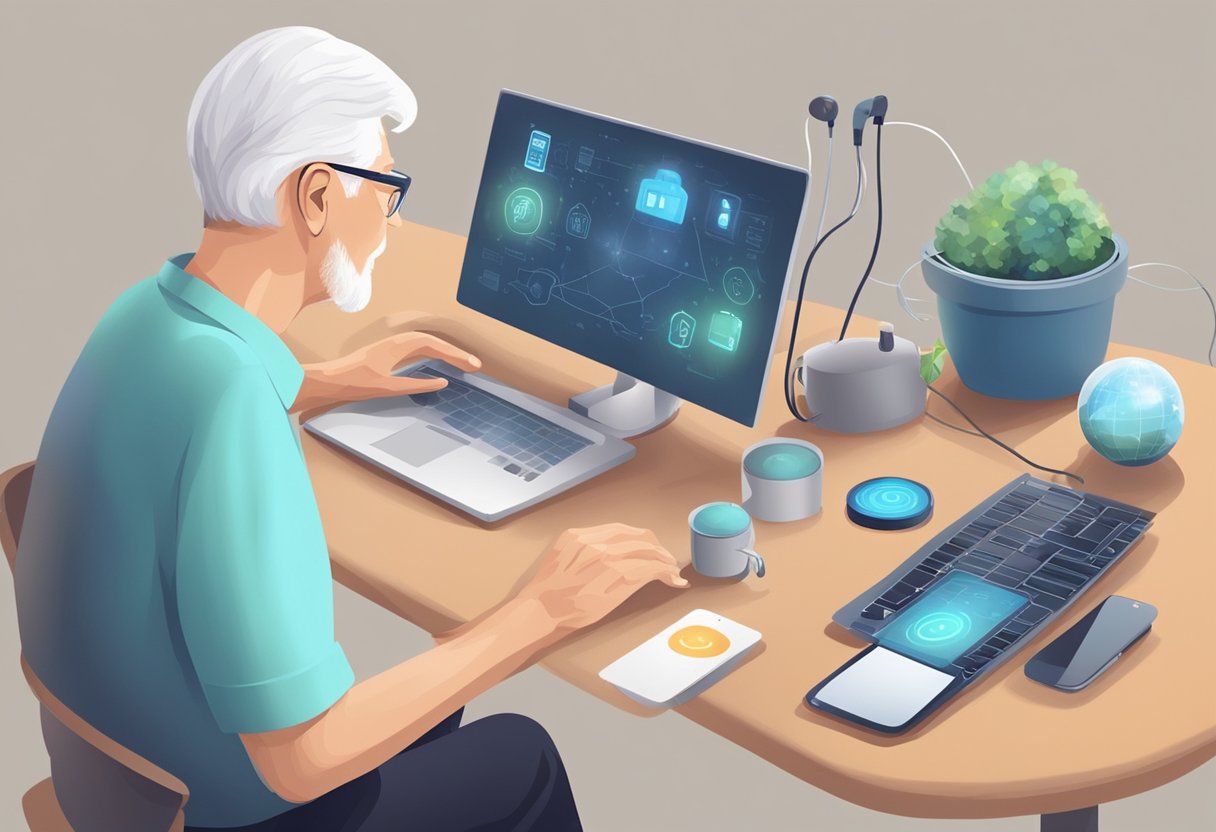
IoT-based systems and applications have the potential to significantly improve the quality of life for the elderly. These innovative technologies can assist with mobility, daily activities, and social engagement, helping seniors maintain their independence and connectedness.
Assistive Technologies for Mobility and Daily Activities
IoT-enabled assistive technologies can help seniors with mobility issues and daily activities.
For example, smart home devices such as voice-activated assistants and smart thermostats can make it easier for seniors to control their environment.
Wearable devices, such as smartwatches and fitness trackers, can track physical activity and monitor vital signs, helping seniors stay healthy and active.
Smart home technologies can also assist with daily activities such as cooking, cleaning, and medication management.
IoT-enabled kitchen appliances can help seniors prepare meals safely and efficiently, while smart vacuum cleaners can help keep their homes clean.
IoT-enabled medication reminders can help seniors take their medications on time, reducing the risk of adverse health outcomes.
Social Engagement and Connectedness
Social isolation is a significant problem for many seniors, leading to loneliness and depression.
IoT-enabled technologies can help seniors stay connected with friends and family, reducing social isolation and improving their quality of life.
Social robots, for example, can provide companionship and emotional support for seniors.
Smart home devices such as video conferencing systems can help seniors stay in touch with loved ones who live far away.
IoT-enabled social networks can connect seniors with others who share their interests, providing opportunities for social engagement and community building.
Challenges and Future Directions in IoT for Elderly Care
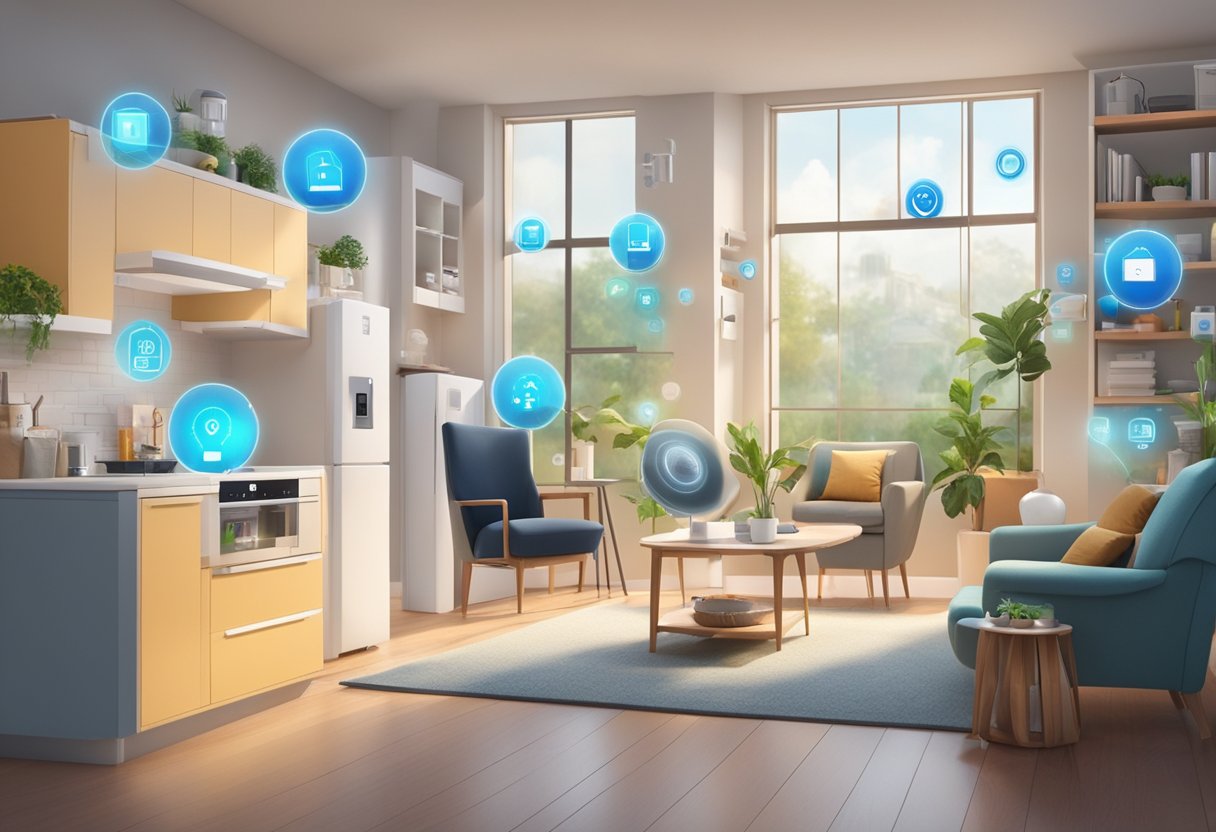
As the elderly population continues to grow, the need for innovative IoT gadgets to enhance their quality of life is becoming more pressing.
However, there are several challenges that need to be addressed in order to fully realize the potential of IoT for elderly care. This section will discuss some of the technical and usability challenges that need to be overcome, as well as the future directions of IoT technologies in this field.
Addressing Technical and Usability Challenges
One of the main challenges in developing IoT gadgets for elderly care is ensuring that they are user-friendly and accessible to the elderly population.
Many elderly individuals may not be familiar with technology and may find it difficult to use complex devices.
Therefore, it is important to design IoT gadgets with a focus on usability, simplicity, and accessibility.
Another challenge is ensuring that IoT gadgets are reliable and secure.
As these devices collect and transmit sensitive data, it is important to ensure that they are protected against cyber threats.
Furthermore, IoT gadgets must be designed to be reliable and resilient, with the ability to operate in a range of environments and conditions.
Evolving IoT Technologies and Aging Demographics
As the elderly population continues to grow, there is a need for IoT technologies that can adapt to the changing needs of this demographic.
Machine learning and deep learning algorithms can be used to analyze data from IoT gadgets and provide personalized recommendations and interventions for elderly individuals.
In the future, IoT technologies will continue to evolve and become more sophisticated, with the potential to revolutionize elderly care.
For example, wearable devices with advanced sensors and AI capabilities could be used to monitor and predict health outcomes, enabling early intervention and prevention of health problems.
Overall, while there are several challenges that need to be addressed, the future of IoT for elderly care looks promising.
With continued innovation and development, IoT gadgets have the potential to enhance the quality of life for elderly individuals and improve the efficiency and effectiveness of healthcare systems.

